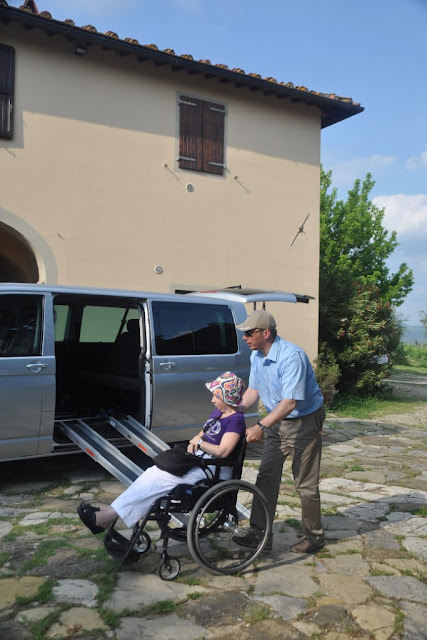THE BEST "STORY BEHIND THE BEAUTY
AND HISTORY"
GUIDEBOOK WE'VE SEEN
Churches dominate Lucca and the 200-plus pages about
still standing and former churches dominate Lindquist's guidebook.
"Every Lucchese knows that at one time there were
precisely one hundred churches in town," the author writes.
"It is a somewhat mythical number (in fact, the
official website calls it "the city of ninety-nine churches") but in
the Middle Ages it was not far from the truth, if we count every oratorio,
chapel, and those churches which lay just outside the walls."
Lindquist goes on to chronicle the history, significance,
art works and other details of 41 still existing churches, plus 37 that have
been demolished or radically altered.
The author goes into great detail about the Cathedral of
San Martino, founded in the 580s and greatly expanded in the 700s -- which was
a boom time for wealthy Lucca.
Our favorite exterior decoration is the Labyrinth, which
dates to the 1100s.
The inscription reads "Here is the labyrinth built
by Daedalus of Crete, from which no one who entered could escape, except
Theseus who was helped by the thread of Ariande."
Lindquist describes the famed equestrian statue of St.
Martin giving his cloak to a pauper as "one of the earliest examples of
Tuscan sculpture," which he dates back to about 1200.
San Martino has many treasures inside, but our favorite
is Jacapo della Quercia's Sarcophagus of Ilaria del Carretto.
Ilaria, wife of mega-wealthy merchant Paolo Guinigi, died
in childbrith at age 26.
Della Quercia's early 1400s artistic tomb features the young Ilaria with a dog at her feet, a symbol of conjugate fidelity.
Order the book at www.lindquistguides.com
The Wanderer's Guide to Lucca review
continues tomorrow
-- September 1





















